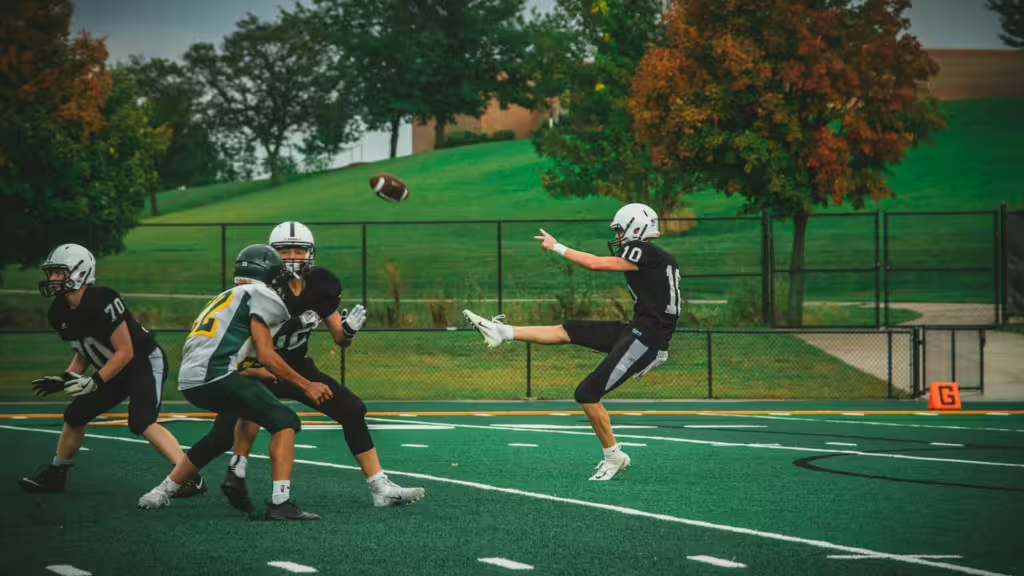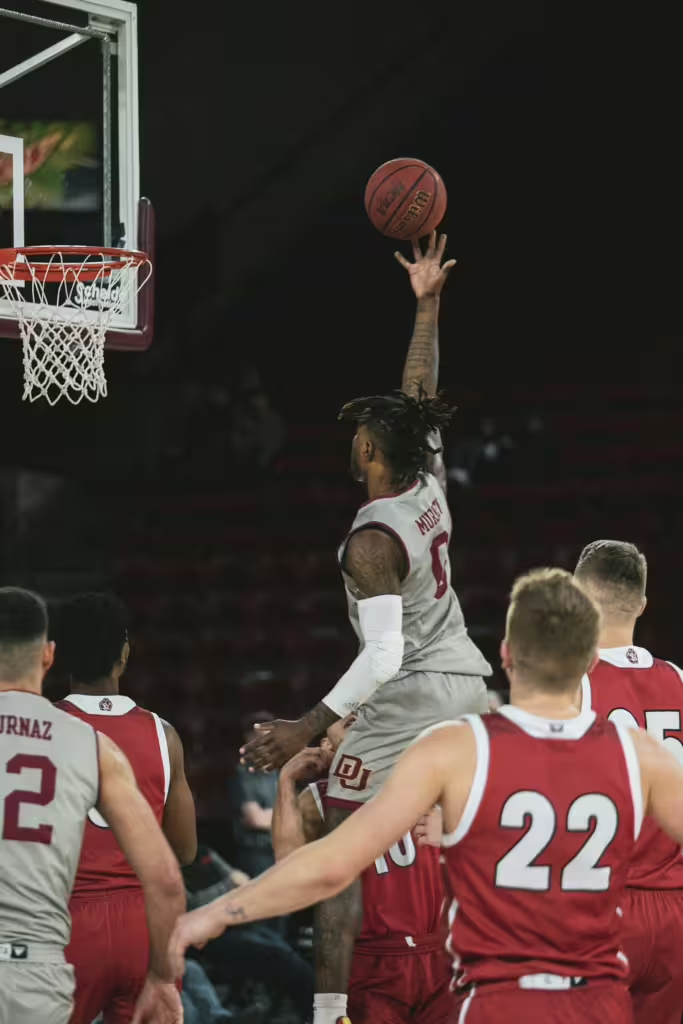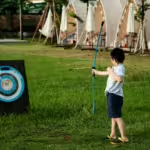For today’s article, we decided to tackle an aspect of youth sports that many parents might not consider when their child is just starting out. After all, when a child is young, a parent’s main concerns are usually whether or not they will be happy in their chosen sport, not whether or not they will be able to play at a college level some day. This is as it should be. Nevertheless, many parents with athletic children do find themselves wondering how college sports is eventually going to work, and worrying over the specifics.
To that end, we at Cultured Athlete have decided to begin featuring a series of articles about higher levels of play. Our hope is that through these articles, we will help parents to better understand what they can expect when their child gets closer to college-aged; whether or not they choose to continue playing sports at a competitive, college level.
In this article, our aim is to help parents whose middle or high school athletes have aspirations of playing at a collegiate level. If that is the case for you, dear reader, than this is the time to start preparing for that eventuality.
Thus, this article will hopefully serve as a means of teaching parents what it takes to gear their kids up for a college sports career. We will touch on everything from academic preparation to athletic development, while paying special attention to often overlooked recruiting timelines and mental health strategies that may help put everyone at ease. So get ready parents, college is closer than you think!

College Sports in the U.S.
Before diving into the checklists and schedules we know a lot of you are probably waiting for, it’s important that parents understand some of the basic structure around college athletics in the United States.
NCAA, NAIA, and NJCAA
- NCAA (National Collegiate Athletic Association): This acronym represents the largest and most well-known governing body in the U.S. college sports world. The NCAA is divided into three divisions:
- Division I: Represents the highest level of competition and often comes with full-ride scholarships for particularly skillful players.
- Division II: This division is less competitive than Division 1 but it does come with partial scholarships for a chosen few.
- Division III: There are no athletic scholarships at this level, but the upside it that Division III features a stronger academic focus. In essence, there is a better student-athlete balance in place here.
- NAIA (National Association of Intercollegiate Athletics): This grouping is mostly for smaller schools with competitive athletic programs. NAIA tends to feature more flexible recruiting rules for young athletes.
- NJCAA (National Junior College Athletic Association): The final grouping is more for two-year colleges (junior or community colleges) but that doesn’t mean that it is any less important for some students. In many ways, the NJCAA is a great stepping stone for student-athletes looking to develop a bit before they go on to transfer to a four-year school.
Parents should note that each of the routes above offers a different level of exposure, scholarships, and competition. This means that finding the right one to match your child’s goals and abilities with the right level of play is vital to making sure they have the most opportune college experience.
Do Grades Matter Too?
Look, we know that many parents are working under the misapprehension that success in college sports is a matter of athletic ability. No matter how talented your child is, college is still synonymous with higher education and that means that they simply won’t be allowed to play college sports unless they meet certain academic eligibility requirements. Those requirements vary among the different associations mentioned above, of course, but nearly all of them require that the athlete meet some academic benchmarks in order to continue participating in sports. The key academic benchmarks for the associations are as follows:
- NCAA Division I & II require:
- The student maintains a minimum GPA in core high school courses
- That the student completes 16 core courses (English, math, science, etc.)
- Students should have minimum SAT/ACT scores. Not that this is optional at some schools post-2020, but it is still considered useful on an application.
- Finally, the student should be registered with the NCAA Eligibility Center
- Division III, NAIA, and NJCAA each have their own requirements, but academic readiness and academic participation still plays a major role when it comes to college sports consideration.
Middle School and Early High School
Parents of middle school age children might think that college is pretty far off, but you’d be surprised. Kids in grades 6-9 should start gearing up to college in minor ways, if they or their parents are considering a collegiate sports experience. Some ways to enable this are to focus on multi-sport participation early on. This helps give a wider range of experience, improving athleticism overall, as well as reducing the odds of burnout or repetitive stress injuries. At these tender ages, kids should be mastering the fundamentals and building strong habits on and off the sports field. Young athletes of this age should also be learning to balance sports, academics, and their family/social life. Time management will be very important once they attend college on their own.
High School Years
Obviously, college is right around the corner at this stage, so parents need to be getting serious about things. Remember, this is when college athletes usually start getting noticed, so parents should encourage their kids to start building a sports resume. This means joining more competitive, travel, or elite teams. Those types of games and meets will give them more exposure to college coaches “in the wild” as it were. At the same time, parents and kids should attend showcase events and tournaments; such places are scouting hotbeds for college recruiters with an eye for the next Division 1 champ. Parents can also begin compiling their child’s stats and filming their noteworthy sports performances for later use in a practical resume/sports portfolio.
A real sports college resume should include:
- Athlete’s aame, position, height/weight, and contact info
- The athlete’s GPA, SAT/ACT scores (if available)
- Any of their previous coaches’ contact info, for the purposes. of recommendation. Official recommendation letters from such individuals will also help.
- Links to the player’s highlight reels, as we mentioned earlier.
- Any and all athletic accomplishments and team affiliations that would help highlight their prowess.
The Recruiting Process: How It Works
Recruiting rules are always going to vary by sport and association. However, the general rule is that the earlier you and your child start preparing, the better their odds of getting picked. Below are some key recruiting terms parents ought to know.
- Contact Period: Coaches can call, text, email, and meet athletes.
- Quiet Period: Coaches can’t meet in person off-campus.
- Dead Period: No in-person or recruiting contact allowed.
- Verbal Commitment: A non-binding agreement between athlete and school.
- National Letter of Intent (NLI): Binding agreement to attend a school in exchange for a scholarship.

Understanding Scholarships and Financial Aid
We will go into scholarships in full in future articles, but the bare-bones explanation will help give parents an idea of what to expect. First, try and understand that a full-ride athletic scholarship is a big dream — but while it is a great thing to strive for, such scholarships are exceptionally rare. Thus, parents and athletes need to manage their expectations and explore all options without setting their hopes too high.
Some things to keep in mind are that only about 2% of high school athletes receive athletic scholarships these days. Full rides, generally, are mostly limited to revenue sports, some examples being football and basketball. Also, understand that many scholarships are partial, while others can be renewed every year. In addition, most are performance-based; we’re talking academically and athletically.
Athletics aren’t everything, either, incidentally. Strong grades can help with this and depending on the school and sport, in question, could lead to merit scholarships. This is often the case when. it comes to Division III and NAIA schools. Also, if your family is dealing with financiall hardship, don’t rely exclusively on scholarships. You can always use the Free Application for Federal Student Aid (FAFSA) to find college funding.

Cultured Athlete Says…
As you can see, the road to college sports is paved with a options, opportunities, and difficulties in equal measure. Nevertheless, any parents that wishes to help their child pursue a college sports career, need not worry too much about the latter. This can be a rewarding challenge for everyone! All it takes is a little time, some careful planning, and finding the balance between the academic, athletic, and emotional. It might sound like a tall order, but you must remember that your job as a parent is not to guarantee them a scholarship. No, you need to help them prepare and give them all the info they need to go for the right opportunities. Only they can guarantee their own spot in the college sports experience, but they will certainly need your guidance and support to do so.
Discover more from CulturedAthlete
Subscribe to get the latest posts sent to your email.






